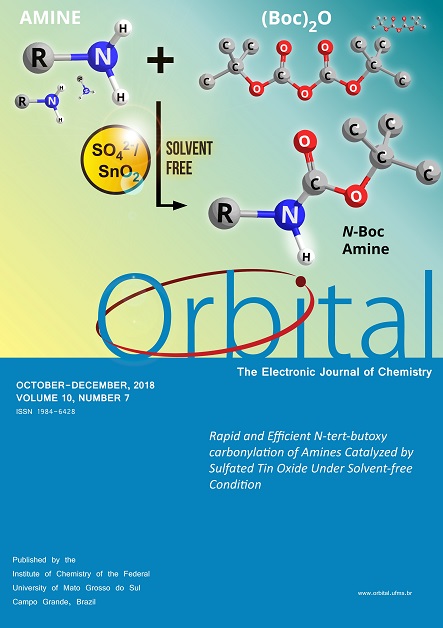Solvent Effects on Frontier Orbitals and Electronic Transitions of Manganese Carbonyl Complexes: A DFT/TDDFT Study
- manganese carbonyl complexes,
- DFT/TDDFT,
- frontier orbital,
- electronic transitions
Copyright (c) 2018 Orbital: The Electronic Journal of Chemistry

This work is licensed under a Creative Commons Attribution-NonCommercial-NoDerivatives 4.0 International License.
Abstract
Metal carbonyl complexes constitute a molecular family that is widely used in chemical processes since their discovery. Recently, one of the most popular applications of these molecules is storage/transport of CO. It is known that CO is not only an ordinary toxic gas but also a gasotransmitter. It is synthesized endogenously and the amount of CO increases in healing periods. This knowledge provides strong motivation for using metal carbonyl complexes as CO-releasing molecules for therapeutic purposes. However, the solvent that is used in analyzing CO-releasing properties causes quantitative discrepancies and this is a disadvantage for progression of studies. Nevertheless, it is extremely difficult to analyze the activity differences of bioactive molecules depending upon solvent type due to time/source restrictions. Herein, we show that theoretical analysis with DFT/TDDFT approaches could be a good alternative for determining the solvent effect. In this study, we analyzed the molecular orbital diagrams and electronic transitions of [Mn(CO)3(bpy)(L)]+ type complexes for various solvents.


